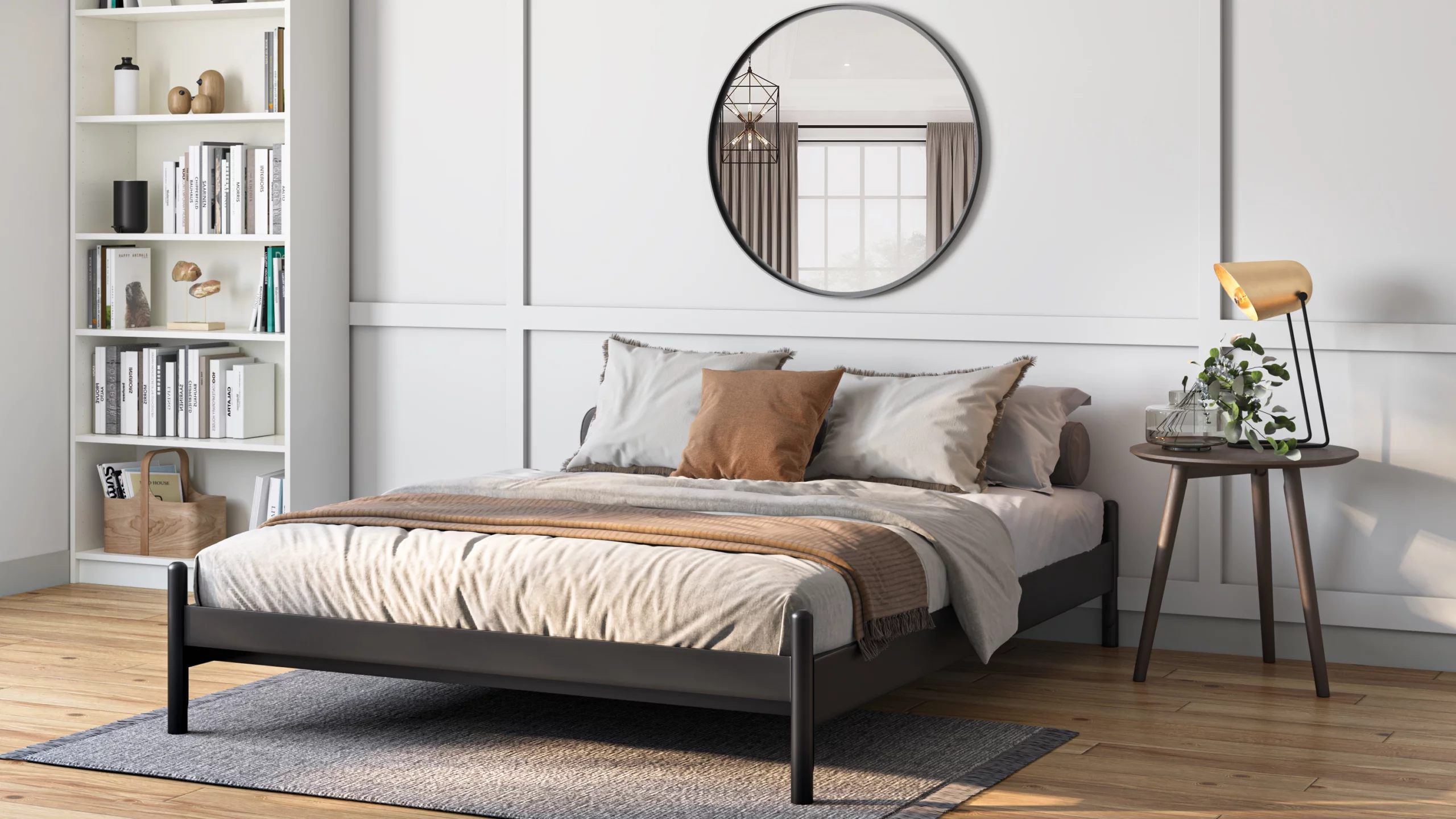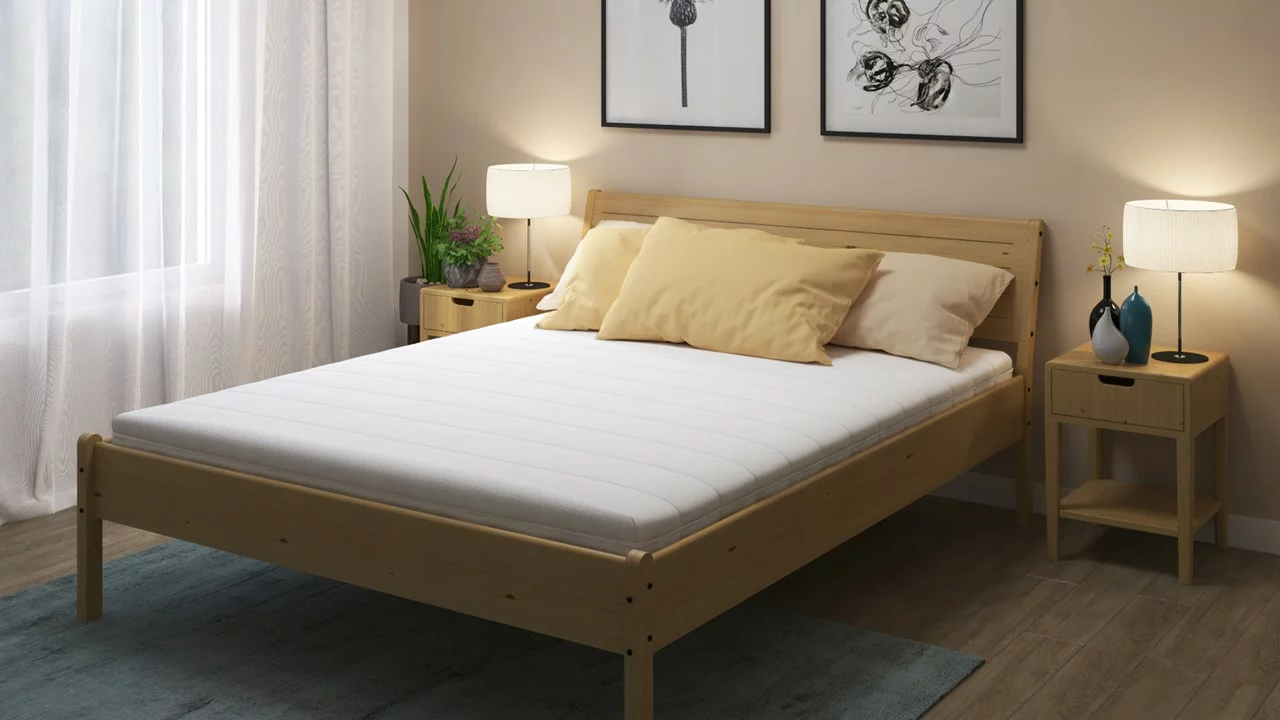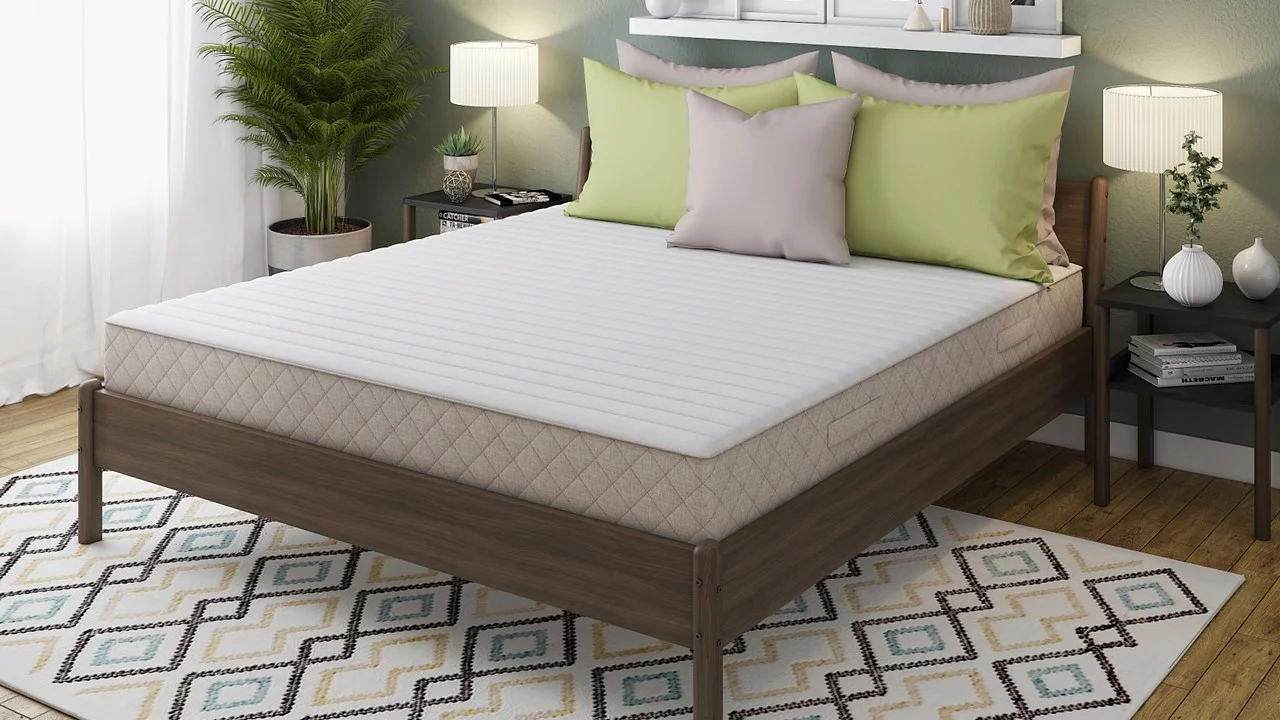A Guide to Choosing the Right Mattress for Quality Sleep

Getting a good night’s sleep isn’t just about having the right bedtime routine or setting the perfect room temperature. The foundation of your slumber sanctuary, the mattress must ensure you get the rest you deserve. With so many options in the market, choosing the right mattress can feel daunting. Before diving into how to choose, it’s essential to understand why investing in a high-quality mattress holds significance.
Adequate sleep is a cornerstone of overall well-being, and the role of a well-suited mattress in achieving quality sleep cannot be overstated. Here’s a more in-depth look at how sleep and the right mattress impact various aspects of your health and daily life:
- Mental Clarity and Cognitive Function: During deep sleep, the brain processes and organises information, improving problem-solving skills, creativity, and concentration. Sleeping on a comfortable, supportive mattress makes you more likely to experience uninterrupted, restorative sleep, enhancing your cognitive abilities.
- Mood and Emotional Well-being: Sleep deprivation affects the brain’s emotional regulation centres, making managing emotions and coping with stress more challenging. A quality mattress helps promote deep and restful sleep, contributing to a more stable and positive mood.
- Physical Health: Sound sleep is essential for physical health. It allows the body to repair tissues, strengthen the immune system, and regulate hormones. A supportive mattress ensures that your body maintains proper alignment, reducing the risk of musculoskeletal issues and pain.
- Pain Relief: The right mattress can significantly alleviate or prevent pain in various body parts, such as the back, shoulders, hips, and joints. Proper support and pressure relief the mattress provides help reduce discomfort and pain, especially for individuals with chronic pain conditions.
- Energy and Productivity: Quality sleep on a comfortable mattress increases energy levels during the day. You wake up feeling refreshed & energised, to tackle daily tasks, which can enhance productivity and overall performance in both professional and personal spheres.
- Longevity: Chronic sleep deprivation and poor sleep quality have been linked to various health issues, including an increased risk of diabetes, heart disease, and obesity. Investing in a mattress that promotes restorative sleep contributes to your long-term health and well-being.
Different Types of Mattresses and Their Benefits
When considering the right mattress for your needs, it’s essential to grasp the various available types and their advantages. There are several different types of mattresses in the market, each catering to specific preferences and requirements.

-
Pocket Spring Mattress:
These are among the most common and affordable options. They are widely available and popular due to their supportive coils and breathable design, which helps prevent overheating and night sweats.
-
Hybrid Mattress:
For those seeking a balance between firmness and softness, hybrid mattresses combine the features of spring and memory foam mattresses. These mattresses typically feature coils and layers of memory foam or other cushioning materials, providing a comfortable and supportive sleep surface.
-
Hyper-Elastic Polymer Mattress:
A step up from high-density foam, hyper-elastic polymer mattresses exert upward pressure, providing pain relief and exceptional comfort. They are durable, comfortable, and budget-friendly.
-
Foam Mattresses:
India’s second most preferred type, foam mattresses offer body-contouring support and pressure point relief. While they can be more expensive, their quality and benefits are worth the investment. Foam mattresses excel at motion isolation, ensuring undisturbed sleep.
-
Spring Mattresses:
Also known as an innerspring mattress, it uses a system of metal coils or springs to provide support & comfort. These coils are typically made of steel, and are strategically arranged within the mattress to distribute weight evenly and offer varying degrees of firmness, depending on the specific design and coil type used. Spring mattresses may come in different variations, such as Bonnell springs and pocketed coils, each with its characteristics and benefits.
- Bonnell springs, also called open coil or innerspring coils, have a traditional design characterised by larger springs with an hourglass shape. These springs are interconnected through helical wires, ensuring stability and durability.
- Pocket spring mattresses, often called pocketed coil or individual coil mattresses, have emerged as a contemporary alternative known for personalised support and motion isolation. Smaller springs are individually encased within fabric pockets in these mattresses, allowing for independent movement.
Choosing the right mattress size
- Single Bed: [Length:72 to 78 inches, Breadth: 30, 36, or 42 inches]
Single beds are designed for individual sleepers, making them ideal for children’s bedrooms, guest rooms, or compact living spaces. The choice of breadth depends on the available space and comfort requirements. - Double Bed: [Length: 72 to 75 inches, Breadth: 48 inches]
Double beds provide a bit more space than single beds, offering comfort for a single sleeper who wants extra room or a cosy fit for a couple. They are a versatile choice for various room sizes and sleeping arrangements. - Queen Bed: [Length: 72 to 75 inches, Breadth: 60 or 66 inches]
Queen-sized beds are a popular choice for couples who desire more space. They offer ample room for two people to sleep comfortably, without taking up excessive floor space. The breadth can vary, with 60 inches being the standard and 66 inches offering extra room. - King Bed: [Length: 72 to 78 inches, Breadth: 72 inches]
This is the largest and most spacious option, providing maximum sleeping space for couples. With a length ranging from 72 to 78 inches and a breadth of 72 inches, these beds are ideal for larger master bedrooms, restless sleepers, or those who simply enjoy having plenty of room to stretch out and relax. - Turnald Beds: Also known as Tornal / Tournay beds, these are a unique and culturally significant type of bedding. They are characterised by their low height, typically sitting close to the ground. This design choice has both practical and aesthetic benefits. From a functional standpoint, the low profile allows for better air circulation around the sleeping surface, offering a cooling effect that can be especially valuable in warmer climates.
It is important to note that while these dimensions represent standard sizes, variations can exist based on factors such as the manufacturer and region. Additionally, there are specialty bed sizes like California King, and custom sizes available to meet specific needs or preferences
Different Types of Foam Mattress
- Memory Foam: Highly absorbent and soft, memory foam mattresses conform to your body’s shape, evenly distributing weight and providing exceptional comfort, making them ideal for relieving body pain.
- Latex Foam: Latex foam mattresses offer buoyant support and gentle cushioning, making them suitable for sleepers with joint pain or those prioritising natural spinal alignment.
- High-Density Foam: These mattresses provide a soft, cloud-like feel while ensuring proper support and promoting deep sleep, making them an excellent choice for a balanced sleep experience.
Selecting the right mattress and utilising these accessories can significantly impact your sleep quality. With a wide variety of options available, you can tailor your sleeping experience to meet your specific needs.

Tips & Factors to Consider in a Mattress
- Firmness: Understand the right firmness level for your body type and sleeping position. Whether you’re a side sleeper needing softer support or a back sleeper requiring firmness, choose accordingly.
- Sleep Position: Your sleeping style – side, back, or stomach – will influence your choice. For instance, side sleepers might opt for a mattress with good support for shoulders and hips.
- Special Needs: If you have allergies, consider hypoallergenic options. If you suffer from backaches, orthopaedic mattresses might be your best bet.
- Budget: Luxury doesn’t always mean exorbitant. With brands like metercube, you’re ensured quality without breaking the bank.
- Edge Support: If you require edge support for sitting or getting in and out of bed, look for mattresses with reinforced edges.
- Thickness: Typically measured in inches, mattress thickness can vary widely, ranging from slim, minimalist options of around 6 to 8 inches to more substantial, plush varieties that can be 12 inches or more.
- Replacing: While durability is a feature of quality mattresses, they don’t last forever. On an average, a mattress’s lifespan ranges from 7 to 10 years. However, replacing yours every 6-8 years is advisable under regular conditions. If your mattress sags noticeably, exposes springs, or if you feel discomfort, it’s time for a change.
- Maintenance: This includes rotating, vacuuming and sunbathing your mattress once a month. Using a mattress protector and toppers ensures it is on a proper base to enhance comfort and durability.
In conclusion, as you navigate the myriad options and consider factors like firmness, materials, and durability, remember that these choices are about more than just furniture. Your choice of mattress has the power to shape the way you rest, recover, and rejuvenate. Cherish the nights filled with peaceful slumber because your journey to a better night’s sleep is worth treading – leading to a brighter, more rejuvenated tomorrow.








